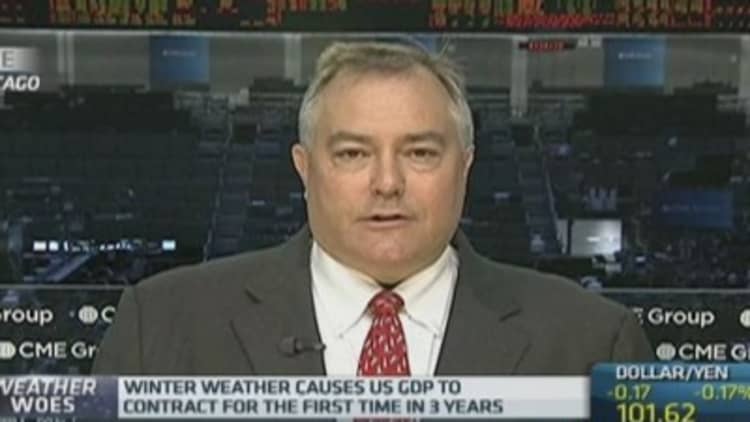The $20 billion catastrophe bond market is set to grow some 150 percent in the next four years, as bond issuers take on a new range of perils and investors continue the hunt for yield, data from BNY Mellon shows.
Catastrophe or so-called "cat" bond investors receive interest payments in exchange for buying bonds that are sponsored by insurers and linked to specific events, such as an earthquake in California.
Read MoreDisaster investors upped bets in Q1
If a disaster does occur, and the insurer's losses exceed a certain amount, the face value of the bond can be wiped out, but the bonds remain popular as they are seen as largely uncorrelated to capital markets.
BNY Mellon expects to see the number of cat bonds outstanding to grow to $50 billion by the end of 2018, predicting a compound annual growth rate of 20 percent for the bonds, compared to 30 percent over the past nine years.
Read MoreThis is what is keeping bond yields low
The bank said cat bond issuances have mainly been for U.S. risks such as earthquakes or hurricanes but new issuances are taking on different kind of disasters as the industry grows, the international head of insurance at BNY Mellon, Paul Traynor said.
"Non-peak U.S. perils such as thunderstorms and wildfires are featuring in more transactions, as are secondary perils arising from earthquakes such as liquefaction and tsunamis," said Traynor.

Last week, U.S. insurer USAA sold $130 million of cat bonds, data provider Artemis said, giving investors the chance to bet on events as diverse as a volcano eruption or a meteor strike for the first time.
Read MoreWhy 2014 keeps catching bond investors by surprise
The size of the deal was increased from $100 million following strong appetite, as sales of cat bonds have boomed so far this year.
Chief market strategist at Rosenblatt Securities, Brian Reynolds said the appetite for such bonds illustrated that investors should expect more "complex, esoteric, and opaque structured finance deals than ever."
"While these deals will likely eventually contribute to a financial disaster, that event is not likely to happen for a number of years because our nation's pensions and other large investors have fresh cash pouring into them on which they need to earn a high yield," said Reynolds.
Read More'Mysterious' bond market move could continue
Investors pumped $1.2 billion into catastrophe bonds in the first quarter of this year according to Verisk's Property Claim Services, with the amount issued up 37 percent over the same period last year, making for the third-largest quarter in "cat bond" history.
Cat bonds, once the preserve of hedge funds, insurers and reinsurers are now contending with pension funds, which have rushed into the sector in the last two years making yields not as attractive as they once were.
Last year, data from Swiss Re showed pension funds accounted for 14 percent of direct investment in new cat bonds issued, up from 0 percent in 2007.
Follow us on Twitter: @CNBCWorld


